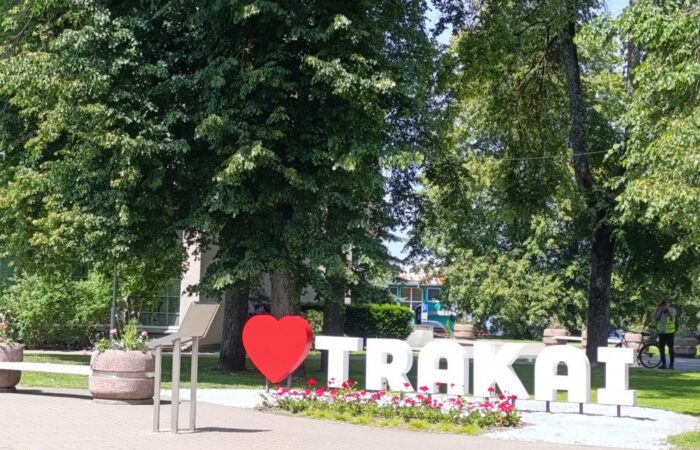Classic Delta scenery
By Alexander York
The Duna Delta in Romania, where the locals know it as Delta Dunării, is a wonder and splendour in every sense. The greater part lies in far eastern Romania at the Black Sea, with a smaller part to the north in neighbouring Ukraine. Its surface area is some 4,152 square kilometres, of which 3,446 km2 are on the Romanian side. This unique waterfront wildernessis mostly covered by wetlands and features an intricate abundance of reeds, marshes, channels, streamlets, islands, lakes and wildlife. Furthest end stop Sulina is an international riverside border town for ships at the easternmost point of the European Union and directly facing the Black Sea. Nowadays it is easier to get to than ever before and very open to sustainable tourism. Tulcea – the Delta and the mainland
Tulcea – the Delta and the mainland
It’s great to explore the Duna/Danube Delta with its labyrinths of canals, lighthouses and streams, all home to the largest biodiversity in the world. There are three main waterway traffic routes, the main one being the better known and more accessible 50-kilometer Tulcea to Sulina route that naturally comes with series of streamlets and canals along its sides. Here are hosted numerous species of fish and birds such as pelicans, ducks, swans, mallards, geese, herons and pheasants.
The most symbolic bird of this region is the pelican. These elegant, soaring birds have distinctive beaks and wingspans that rival albatrosses, as well as being noted for flying in formation. There are two types that are easy to come by in this region, the Great White (Pelecanus onocrotalus) and the Dalmation Pelican (Pelecanus crispus). When it comes to fish, there is plenty to consider – such as carp, pike, perch, sturgeon and mackerel, and many more.  Somewhere along the expansive Tulcea and Sulina main Duna shipping route
Somewhere along the expansive Tulcea and Sulina main Duna shipping route
In addition come the less considered mammals that feature here – foxes, wild cats, otters, ermines and occasional wolves, for instance. In 1990, this abundant shrine with many long lines of poplar and willow trees prominent along the riverbanks became a UNESCO World Heritage Site with around 2,733 square kilometers of strictly protected areas.
All the while, vast, hefty cargo ships and other watercraft sail in and out from around the world along the Tulcea-Sulina channel, which is the only one of the three routes suitable for bulk ship navigation. Tulcea and Sulina also have their own tourism infrastructure as well as their local town scenes. Although Tulcea is accessible by road, river and rail, Sulina and all else around the delta are accessible only by small tugs and passenger ferries.  End Stop Sulina – where the River Duna meets the Black Sea
End Stop Sulina – where the River Duna meets the Black Sea
Thousands of birds migrate around the region from March to October, which makes the delta perfect for bird watching and taking in the silence. Needless to say, fishing plays a big part in local life, as expressed by the many suitable boats around – and the many restaurants too.
———————————
I was at the Duna Delta some years ago and loved it, so I had no hesitation in accepting a press invitation to go again this April. This came from Stefan Baciu of FIJET Romania, which is a branch of the Fédération Internationale des Journalistes et Ecrivains du Tourisme; in English the World Federation of Travel Journalists and Writers, a professional organization. (Clubul Presei de Turism – FIJET Romania, clubpresaturism.ro). Local fishermen
Local fishermen Vintage old-style scenery – Duna Delta
Vintage old-style scenery – Duna Delta  A typical house with traditional blue and white decoration – Sulina
A typical house with traditional blue and white decoration – Sulina
While waiting to meet up with the committee in Tulcea I had a few hours to myself before my rendezvous with journalists, TV personnel and travel agents, whereupon I discovered that there are various museums which give a general introduction to this area. One is the imperialistic Casa Avramide, with excellent displays of artworks of local scenery. Then there is the Ethnography museum, which relates to traditional artefacts from bygone folklore times in this region. Finally, there was the Ecotourist museum with its fine displays of delta water-related matters. These included aquariums and an emphasis on fishing, which is an important industry for this region.
We participants eventually took an easy-going, three-hour boat ride downstream to end stop Sulina, and finally that evening we made our way to the cheerful Casa Pescarilor Hotel. This was followed by supper at the hospitable Casa Coral shoreline restaurant, where our consortium met local people related to the tourism and travel industry who gave us an in-depth take on this unique landmark.  Our Welcoming Hotel
Our Welcoming Hotel
It was clear whilst walking around and observing the 19th-century architecture that the impressive Sulina has an intriguing maritime history. That bygone time was clearly its golden era during which this small town attracted sailors, conservationists, adventurers and royalty alike from around the world. Unfortunately, many of the desirable buildings fell into disrepair during the changes of fortune that characterised the 20th century. I look forward to returning to see them back in service sometime soon, in particular the elegant Hotel Camberi.
The next day, and with my bedroom window facing the Black Sea itself, it was a pleasure to wake up to a stunning sunrise. Wild horses were gallivanting around in a nearby field, birds were singing and frogs croaking. One could also hear the distant sound of waves. Personally I had not witnessed anything like this for a long time. It was then a chance to check out this immediate area before joining the others for breakfast.
The official day began at the main Tourist Information Centre (see ARBDD – Administraţia Rezervaţiei Biosferei Delta Dunării, ddbra.ro) and Duna Eco museum. We were hosted by Florin Babadatu, the Councillor of the Reservation of the Danube Delta administration, who delivered a scientific presentation on the region’s waters, natural habitats, plant species and so forth. It’s a place definitely worth a visit. Birdwatching awaits at the end of this canal with this delightful mini-cruiser
Birdwatching awaits at the end of this canal with this delightful mini-cruiser  All aboard with the press trip committee!
All aboard with the press trip committee!
Photo credit – Raftu Mitica
Our next port of call was the scenic Pensiunea Mila pension, a short walk away along the shoreline. Whist the visiting travel agents among us documented the comfortable accommodation and general amenities, it was also time to step on board the splendid “Ianca-Galati” mini cruiser – see illustration – and explore the narrow Busurca Canal, a turning off point from the main delta lane, and towards a vast open but very serene expanse of water. Here our group saw a multitude of pelicans, graceful and beautiful great white birds mingled in among the delightful, uplifting surroundings of reeds, lilies, dragonflies and much more, including a few cormorants. All of which symbolise what the Duna Delta is all about. It’s coolness and calm as well as high adventures all the way when cruising around the Delta canals.
It’s coolness and calm as well as high adventures all the way when cruising around the Delta canals.
Situated on major migratory routes, and providing adequate conditions for nesting and hatching, the delta is a magnet for birds from six major eco-regions of the world, including the Mongolian, Arctic and Siberian. There are more than 320 species of birds found in the delta during summer, of which 166 are hatching species and 159 are migratory. Over one million birds, mainly swans and ducks, spend winter here. Further cool and calm endures in our the Delta neighborhood!
Further cool and calm endures in our the Delta neighborhood!
A late lunch followed at the recently built Terrablue Hotel, a luxury establishment with swimming pool that provides hospitality all year round for visitors getting to and from Sulina. The Terrablue comes highly recommended by me.
This rounded off with a stroll along the Sulina promenade to the walk-in “Visitors Centre”, a tourist information bureau run by Julia Pascale. This bureau provides complete set-ups for all local activities, such as boat rides, bird watching and other outdoor activities, as well as hotels and general accommodation to suit all budgets. Make this your first destination when you arrive in Sulina. For this and more, see Unique Au Monde  For further information about hotels, activities, boat rides and much more – make your way directly to this tourist friendly and very informative bureau by the Sulina shoreline
For further information about hotels, activities, boat rides and much more – make your way directly to this tourist friendly and very informative bureau by the Sulina shoreline
Our group visited the Expozitia Sulina Veche museum with its distinct windmill facade. As water, sailing and military matters are paramount to this area, it was interesting to finally confirm that Sulina, from a maritime perspective, plays a significant part in naval history. It was also informative to learn that people of varying nationalities have passed by and stayed over the centuries, thus making this town, as from two hundred years ago, an additional international transitory destination stop. If proof were needed, see the nearby cemetery where one can find headstones of mostly military-related persons from all over Europe, including England.  The very commendable …….. Museum
The very commendable …….. Museum
There is much hidden mystery to this final resting place. According to a record from 1922 there were 24 English people and six Hungarians interred here. I can only assume they must have been sailors or ship labourers of some kind.
Also it was interesting to discover that Sir Charles Hartley (1825-1915), a civil engineer who worked at the Suez Canal, touched base in Sulina. Due to his extensive work mapping the longest river in western Europe, he became known as “The Father of the Danube”. There is a modest statue of him between the Duna Administration office and the main and very atmospheric central St. Alexander and St Nicholas Orthodox Cathedral.  Local hospitality often comes with splendid fish dishes
Local hospitality often comes with splendid fish dishes
Finally, a delightful fish supper at the Class House and Restaurant was accompanied by splendid choral singing from the local Ukrainian community. So, with much cheer, we were able to look back on a distinct day in which we had achieved much. Heading out towards Romania’s most eastern point and the Black Sea
Heading out towards Romania’s most eastern point and the Black Sea  Seagulls – the Black Sea and Ukraine in the far background
Seagulls – the Black Sea and Ukraine in the far background
The next day was equally monumental as we made our way to a small motorboat and cruised at considerable speed from the gentle River Duna climate to the rugged and windswept Black Sea itself. This took us past lighthouses and the Romania-Ukraine borderline to uninhabited Nova Zemlya, which is also known as K Island and is a few kilometres offshore, with Ukraine in distant view. We could not step out onto the island itself but were permitted to anchor a few meters away, from where we noted scenery more rugged altogether than the sedate delta, with birds such as seagulls and general wildlife. Riding the waves back fortunately took us through calmer waters, meaning we were fit for lunch a short while afterwards at the Marea Neagra Restaurant. Once again, this is another pleasing locale that also faces the scenic riverside and delivered us heaps and heaps more fish! Local folk dancers provide delightful entertainment during lunch-hour
Local folk dancers provide delightful entertainment during lunch-hour
This delightful repast came with local folk-dancers before our afternoon sortie took us to the backstreets of the town where roads cease to exist and sand and shingle walkways lead to the Sulina market hall.  The —- Orthodox Church – I would love to also return when renovation work is completed.
The —- Orthodox Church – I would love to also return when renovation work is completed.
Some of the ageing wooden architecture blended in wonderfully with the environment, though sad to say various churches and public buildings are in obvious need of maintenance. In particular the enchanting St. Alexander and St. Nicolas Orthodox Cathedral is high on atmosphere but low on repairs. It would be wonderful to see this mesmerising place of worship back to its original form, as it would much else here. General atmosphere at the —– Cemetery
General atmosphere at the —– Cemetery
Local academic Valentin Lavric then took us to the Cosmopolitan Cemetery, a remarkable shrine in a desolate area between the town and the Black Sea. It was remarkable to pick up on further local history at this memorial site with its significant number of resting people of different nationalities and mainly from the 19th century.
Remarkably, there is an English couple and they are known as the Sulina Romeo and Juliet. William Webster and Margaret Anne Pringle were aged 25 and 23 respectively when they both died in unknown circumstances in 1868. I am yet to dig deeper into this matter – and perhaps discover the Shakespeare connection. There must be an answer somewhere. Did this vessel really sail in from so far?
Did this vessel really sail in from so far?
The Duna Delta region provides a mixture of additional cultures on top of the predominant Romanians, with Ukrainian, Lipovan, Greek, Bulgarian, Turkish and Macedonian minorities living there too.
Our last supper bought an end to this remarkable promotional press trip. The following day at sunrise we all caught the early morning ferry, this time upstream back to the mainland at Tulcea before going our separate ways around the country. This was an extraordinary time away, hosted in a unique one-off region of Europe. The Duna Delta is one of the least inhabited regions of temperate Europe. About 20,000 people live on the Romanian side, of whom a quarter are in Sulina.  The Sulina Press Trip Committee
The Sulina Press Trip Committee
We all received very good impressions. Getting there can be a real effort, as it was for me by train from Budapest via Bucharest, but it was definitely worthwhile. My general overall notion is, yes it’s “far away”, but a great place. Transylvania, half-way between Budapest and the delta, may seem remote enough, but press on to Tulcea and Sulina and you have really left the rest of Europeway behind. A delightful time awaits with the river people who can introduce you to a whole new way of life in a spirit of coolness and calm. Constanța – the Riviera Capital – and my first stop before the Delta. This is the famous deluxe Art Nouveau Casino which will be re-opened soon.
Constanța – the Riviera Capital – and my first stop before the Delta. This is the famous deluxe Art Nouveau Casino which will be re-opened soon.
Getting there takes considerable time. The first step is to get yourself to Bucharest. From there it’s either slow trains or buses 300 kilometers to Tulcea. Some connections go via Constanța, which is the capital of the Romanian Riviera and makes a comfortable break in lengthy travel. Other than that, persevere with the local transport before your eventual arrival. When in Tulcea, check out the ferry itineraries that are easy to come across whilst walking along the coastal promenade, as there are many options. Speedboats can also take you directly to Sulina. Other itineraries will take you to the sleepier, lesser known areas such as to Mali Island, a tranquil setting and once again really away from it all. Then for next time, I was told often enough to go to Plaja Sfântu Gheorghe, which translates as St. George. This is even more peaceful than Sulina, and I will make my eventual way there when it comes to another visit.  Sulina shoreline at night – with strong red lighting on one side and green on the other. This is in order to help ships orientate themselves by this immediate area.
Sulina shoreline at night – with strong red lighting on one side and green on the other. This is in order to help ships orientate themselves by this immediate area. 
Alexander York




